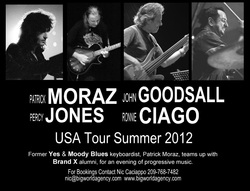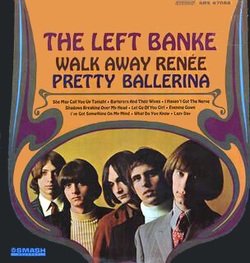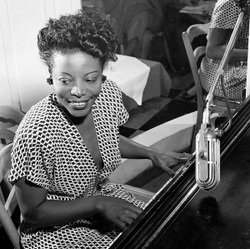
Patrick Moraz & Ronnie Ciago recorded Los Endos several years ago on a Genesis tribute album called The Fox Lies Down. The upcoming tour was being scheduled for May 2012 beginning with dates on the US west coast to be followed by shows on the east coast.
The proposed set list was to include a Yes Relayer suite, Moraz' i, selections from Moraz' band Refugee and plenty of Brand X material. This is something that would have been thrilling to witness. To see Patrick performing his own material from Refugee and certainly the Relayer suite from the Yes album of the same name would have been a concert that we would have promoted to the highest heavens. All this in addition to seeing Moraz alongside the members of Brand X performing that band's compositions.
A word about Patrick Moraz. He has often been called "the perennial replacement" due to his career of seeming to follow in the wake of other great keyboardists. In 1973, Patrick teamed with Lee Jackson and Brian Davison to form the band Refugee after Keith Emerson had departed The Nice, leaving Jackson and Davidson as "musical refugees." Let me say it here and now, I was far more interested in Refugee than I ever was in The Nice. I found and I still find Moraz to be a far superior keyboardist to Emerson. In 1974, Refugee released their self-titled album.
Then things took off for Patrick when it was announced that Rick Wakeman was leaving Yes after Wakeman's disillusionment with Yes' album Tales from Topographic Oceans. Patrick was given the nod to fill those legendary shoes. The result was the Yes album Relayer and what an album it was! As guitar great Jay "Bird" Koder recalls, "We all went to that concert loaded with tomatoes ready to pelt Moraz... but we loved him! He was, in many important ways, better than Wakeman!" That was the discussion held by me and my friend Jackson King (of the Latin Jazz band Carlos Oliva & Los Sobrinos del Juez) back in high school.
In the following year, the members of Yes all released solo albums and Moraz appeared on the solo albums of Chris Squire and Steve Howe, while releasing his won solo album i which can only be described as visionary. Keyboard Magazine named it “Best Keyboard Album” of the year for 1976 with Patrick himself being named "Best New Talent" of the same year. Patrick's tenure of recording and touring with Yes lasted for three phenomenal years.
In 1978, Moraz was named to "replace" the beloved Mike Pinder of the Moody Blues when Pinder realized that he could not endure the rigors and horrors and another world tour after the band released their reunion album entitled Octave. Once again, Moraz proved musically superior to his predecessor.
During those years with the Moody Blues, he released two wonderful jazz albums with former Yes drummer Bill Bruford entitled Music for Piano and Drums and Flags. This was actually a return to Patrick's jazz roots from the 60's when he was the youngest person ever to win the prestigious “Best Soloist Award” at the Zurich Jazz Festival. He was sixteen. He later would open for ...excuse me... John Coltrane on the Trane's European tour.
In the 80's, he worked with guitar legend Kazumi Watanabe, pan pipe virtuoso Simon “Syrinx” Stanciu and with none other than Chick Corea.
He remained with the Moody Blues until 1991 and, in my opinion, has never been given proper credit for his work and time with that band. The separation from the Moody Blues had been an arduous ordeal and he was forced to sue for millions in owed royalties. The band claimed that he was a "hired musician" and not a full band member, despite Patrick's name and photos appearing on all of the band's albums during Patrick's sojourn with them. I confess, I never bought another Moody Blues album after Moraz was gone. Patrick did win a judgment but nothing near what he was reportedly owed.
After his separation from that band, Patrick struggled in his transition to solo artist. Finally, in 1994, Patrick released what I had always hoped to hear -- a solo piano album, Windows of Time. Robert Doerschuk of Keyboard Magazine described it this way: “If Beethoven had gigged with Yes, he might have wound up sounding like this”!
In 2000-2003, Moraz released two more solo piano works Resonance and ESP (Etudes, Sonatas, Preludes). They were splendid! In 2009 Patrick released Change of Space which is a collection of new songs and instrumental pieces. Some of the great musicians who are featured on this album are: Bunny Brunel on bass, John Wackerman on drums, Kazumi Watanabe on guitar, Alex Acuna on Percussion, Alex Ligertwood on lead vocals, Don Adey also on lead vocals, Janis Liebhart on backing vocals, Michael Tovar on Guitar and Ronnie Ciago on drums. Which brings us back to the proposed tour in 2012 with Ronnie Ciago, John Goodsall and Percy Jones from Brand X to join with Patrick Moraz.
Nic Caciappo had managed to gather these great musicians together for a brief tour and I was in high expectations at the prospect. This was the concert I had wanted and awaited.
However, while the dates and venues were being arranged, Moraz withdrew from the proposed tour citing an inability to participate due to lack of time available in the summer. This does not close the door entirely but, meanwhile, the Brand X alumni are considering other options.
I am bitterly disappointed. It was going to be a great show and we would have had a grand time together, listening to the legendary Patrick Moraz with Brand X. Perhaps someone will be able to plead enough with Patrick so that he reconsiders. We would have filled the place up!


 RSS Feed
RSS Feed
